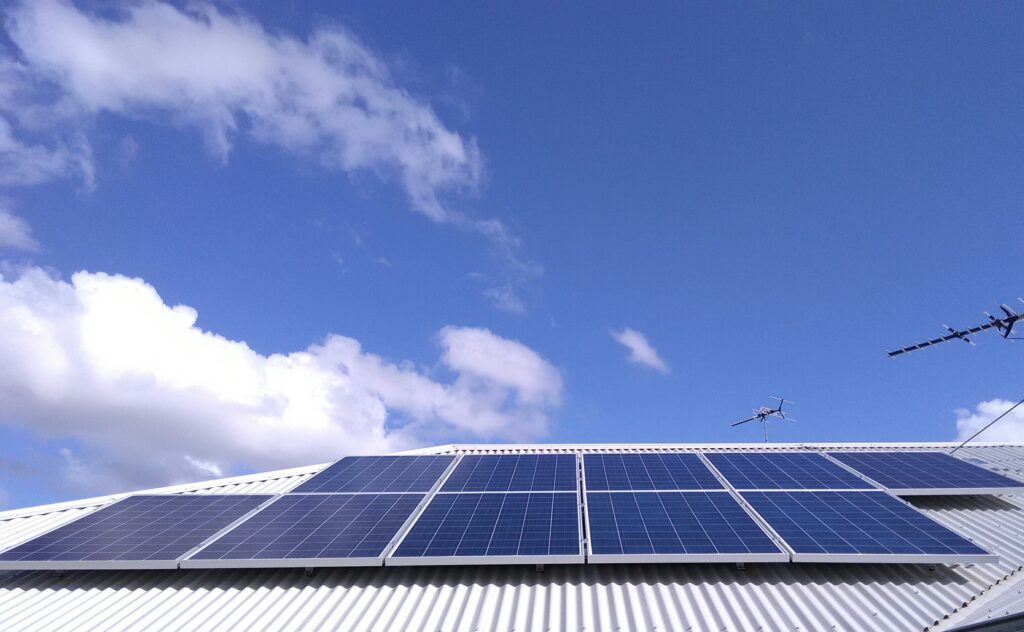So You Want To Go Solar…
A few people – friends, friends of friends, complete strangers – have asked me what the best solar system to buy is. “How many solar panels?” or “Should I get a battery?” and “What is that thing growing out of your head?”.
To them I say:

Everybody’s house is a little different. Everybody’s use case is a bit different. Solar isn’t just a cookie cutter approach; at least, not yet.
What I can say is that there are a few steps I’d recommend to anyone thinking about installing solar panels and/or a battery.
(Oh wait: I forgot the paragraph wailing about how slack I’ve been on the blog. That was it – well except to say I got a new job in November 2017 working in energy which is pretty rad, but keeps me way busy).
MOTIVATION FOR SOLAR
People want solar for different reasons, and from my experience of the last two years, it breaks down into a few things.
Driving down electricity bills is usually numero uno, and there is nothing wrong with that. Investing thousands into something functional like a solar PV system, you’d want to see some payback and/or stick it to “The Man” if you’re angry about whatever it is “The Man” has done.
Green feelgood is another factor. Reducing your grid needs helps save operating costs on your house, as well as your carbon footprint. You also get to understand your ability to contribute to the energy ecosystem via renewable energy.
Curiosity is a relatively new thing, particularly for modern systems with API-driven inverters. Some people (me) like to watch what is happening on their solar system at various intervals, e.g.
After that, its a question of “Do you really *need* solar?”
WHERE TO START
First place is your electricity bill.
Look at the amount you consume on a daily basis across the year. Figure out whether there are major differences between summer, autumn, spring, and winter, and I’ll bet you start to see where the pain points are in terms of running certain devices in summer (AC) or winter (heating).
As I’ve said before: most of us get our bill, have a bit of a rage about it, and then pay it and move on. You need to take the time to analyse who you are, and what you use. It will be very helpful.
Have you spoken to your electricity provider about getting the best deal? Sometimes we pay too much via “lazy tax” where we can’t be bothered even making a phone call.
Have you told your electricity provider that you’re speaking to other electricity providers about the best deal? That can be quite the motivator.
Does your electricity provider offer “green” power options? That might elevate your bill slightly, but give you part of that feelgood factor you’re after.
EFFICIENCY, EFFICIENCY, EFFICIENCY!
Next, I’m going to ask whether you’re doing everything you can to reduce your electricity consumption.
Energy Efficiency is a very much overlooked part of housing, particularly in warmer places like Australia. Building standards here aren’t so great compared to other parts of the world, and we compensate using air conditioners.
I have to say I’m guilty here of jumping into solar + storage before really checking why my bills were so high. The good news is, I’m addressing these issues now by getting awnings on my west-facing windows as well as installing downlight covers in the ceiling to reduce insulation gaps.

These little beauties (20 of) are going in the ceiling tomorrow, to cover those <censored> recessed lights. This will allow me to put the batts right back in place. #EnergyEfficiency pic.twitter.com/rYDHPoe40V
Perhaps it is something as simple as setting your thermostat too hot/cold, and trading money for a tiny bit of discomfort. In modern HVAC (Heating, Ventilation, Air Conditioning), each degree you set your AC up or down from 25oC can cost 10% more energy. Not cool. Or hot. Whatever.
Check all the gaps around your doors and windows. Deploy window coverings against the sun, or heavy curtains against the cold, wherever possible. Turn off the beer fridge if you’re not really using it. When you replace a device, look at the energy efficiency rating system (it can save you hundreds).
The possibilities are not endless, but they’re available, and significant.
The goal is to consume the minimum amount possible without making yourself too uncomfortable. And maybe a little discomfort isn’t such a bad thing ?
Alright, so let’s say you’ve covered the energy efficiency thing, and have a fair handle on your bills. That’s half the battle. Let’s talk about solar.
CAN YOU HANDLE THE SOLAR?
Not every roof can handle a solar PV setup. I’ve lived in a house that could not, due to a lack of appropriate space.
Start by looking at your roof space on Google Maps, and see if you have north- or west-facing roof space that might host a decent array of panels, if you’re in in the Southern Hemisphere. For those north of the equator, its south- or west-facing, obviously.
In some cases you might even want to have east-facing panels as well, due to your usage patterns. Morning people; they exist.
The more complex your roof layout, the more it is likely to cost for installation. Two storey installs can cost more in some cases. Single storey might get tricky if you’ve got multiple roof lines with minimal contiguous area.
Roofing material may also determine how difficult the install becomes, as different fixings and sealing methods are required.
If in any doubt, talk to a local installer. That’s where Google Reviews and recommendations can come in handy – find the right team and you’ll reap the benefits.

A GALAXY OF SOLAR SYSTEMS
The trouble with me recommending anything is that the internet will immediately have an opinion on it. You will read reviews that are negative about perfectly good solar PV equipment, maybe because an individual had a bad experience.
There are thousands of combinations of solar panels, inverters, and (if you require it) storage systems from which to choose. You’ve also got different metering options, which can affect how you get billed, and how you might leverage peak/offpeak power rates.
“How many panels do I get?” is a pertinent question, and my response is always that panels are cheap, so get as many as you can afford.
Remembering that in most new setups, you’re in a “net” situation i.e. the panels feed your house first, then sell any leftover energy back to the grid at a modest rate.
Trying to self-consume every last kWh you produce is a waste of time for a grid-connected system, in my opinion. You’ll end up with a smallish system that meets your needs generally, but you’ll miss a lot of the cost offset you get from feed in tariffs, and payback time will be no different, or longer.
Panels are cheap. Get as many as you can afford.
At the same time, get an inverter that will handle that load. Having 6kW of panels isn’t going to mean much if your inverter is designed for half that. I’ve got 6.5kW of panels and my inverter maxes out at 5kW, which is generally OK, but I’d like a bit more ?
In Australia, I’d recommend a minimum of 5kW of panels. A system of that type will cost you around $6000-$7000 in Australia (installed). In the USA, Trumplandian authorities will ensure it continues to be about double that.
ADDING A BATTERY
Adding storage can double (or more) the cost of a system pretty quickly.
At this point (February 2018) it will extend the payback time accordingly because lithium batteries are still coming out of the early adopter phase. It becomes a question of capital investment versus operating cost.
If you get only the solar panels, you can get payback in under 6 years.
This makes the assumption that you’re operating the system with a decent amount of thought. Move heavy loads to the middle of the day when the sun is shining and the panels are blazing. Make the most of your feed-in-tariffs, where available. Be aware of your efficiency issues, and address them.
If you do all this right, you could get payback down below 5 years, BUT you’ll still be paying an electricity bill, even if its smaller now.
Today, the battery option will take your payback up past 6 years again, and maybe as high as 8 depending on the specifics.
There is a benefit, though: your operating costs for electricity will be closer to zero than if you have solar alone. Heck, maybe you might even turn a small profit!
There are additional benefits to your battery install as well, if you have smart technology like Reposit Power attached to the system. Selling power for $1 / kWh a few times a year might not sound like much, but when your total bill is close to zero, its heading toward profit.
It can help you save money on electricity via arbitrage if you have the right metering setup. Reposit maintain a list of good installers to use in Australia, who will ensure you get the best result.
BUT HOW MUCH WILL I SAVE???
Well, I can’t really answer that, unequivocally. A lot depends on individual circumstances.
I’m saving about $2000 per year over the first two years, having made small changes to how I run my house. I continue to make these changes as I explore ways to reduce my usage.
If you’re just going to whack the system in for something cool to look at, but not change any of your habits, expect your savings to match your behaviour.
